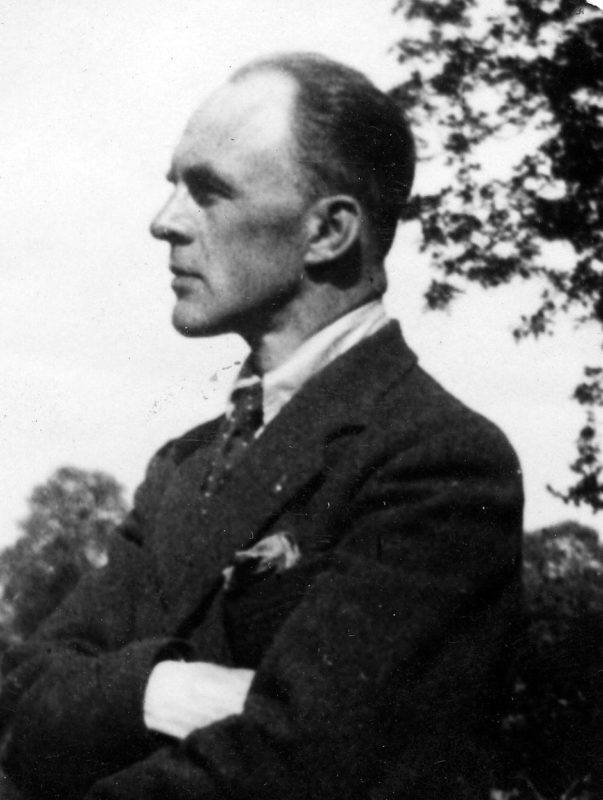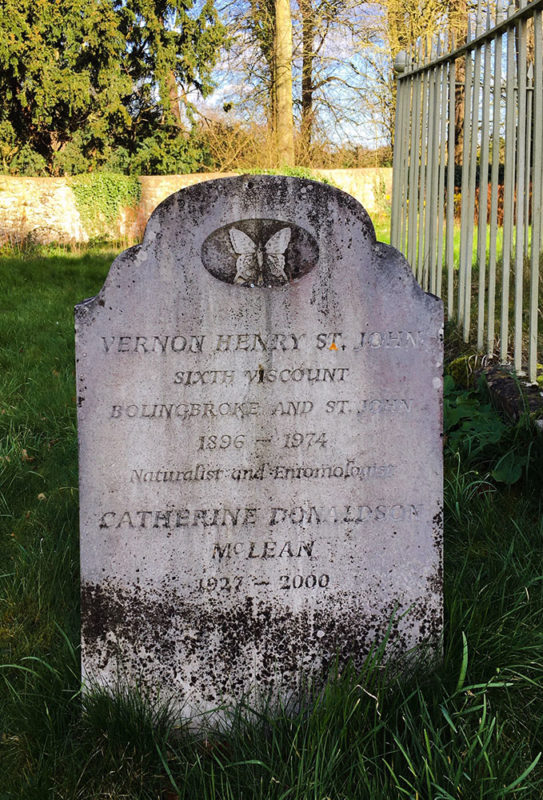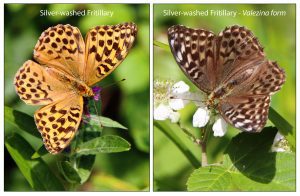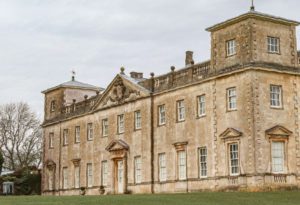Vernon St John, the “Lord of the Butterflies.”
Vernon Henry St John, 6th Viscount Bolingbroke is remembered more for his passion and knowledge of natural history than for the ancient titles he inherited as a small boy in 1899.
From an early age became a keen naturalist under the tutelage of Percy Harrison, Rector of Lydiard. One of Vernon’s great passions was for butterflies and his collection is now housed in the National Museum of Wales. On the gatepost of Vernon’s home in the New Forest was a carving of a Swallowtail butterfly and the same emblem marks his gravestone in St Mary’s churchyard at Lydiard.
Vernon’s interest in lepidoptery brought him into contact with the famous naturalist William Frohawk, whose daughter Valezina he married in 1950. She was named after a rare form of the Silver-Washed Fritillary butterfly! The Valezina is a graceful woodland butterfly that you may see at this time of year.
Vernon’s writings on nature are beautiful and inspiring. In one article he describes a bicycle ride in February when there was snow on the ground:
“The day was beautifully fine, and the sun shone from a cloudless sky. But the air was crisp and keen, for the entire countryside was enwrapped in a mantle of snow, the result of a blizzard the previous day… I noticed the clear-cut, lemon-yellow wings of a male brimstone butterfly as, perched on a snow-covered twig in a thin part of the roadside hedge, the sun sparkled full upon its person in a white, desolate world. High overhead, in circular sweeps, with all the majesty of a soaring eagle, a buzzard looked on this same white expanse.”
In another diary entry he records finding a number of hibernating butterflies whilst outdoors at Lydiard:
“On a day in mid-January, while I was demolishing a wood pile, two red admirals in hibernation came to view. Also hibernating in the same wood pile were twelve peacock butterflies and over thirty small tortoiseshells…”
One of Vernon’s greatest sightings, however, was in springtime when he saw two Large Tortoiseshells basking in the bright sunlight at Lydiard Park. This butterfly became extinct in the UK in the 1960s but migrant Large Tortoiseshells have been seen locally this year; perhaps they will soon be seen once more at Lydiard Park!



